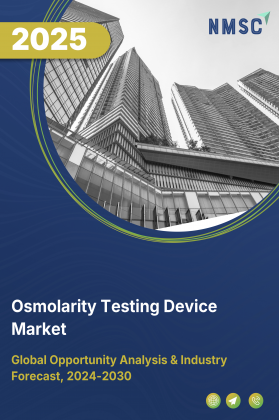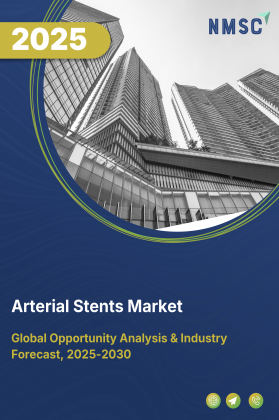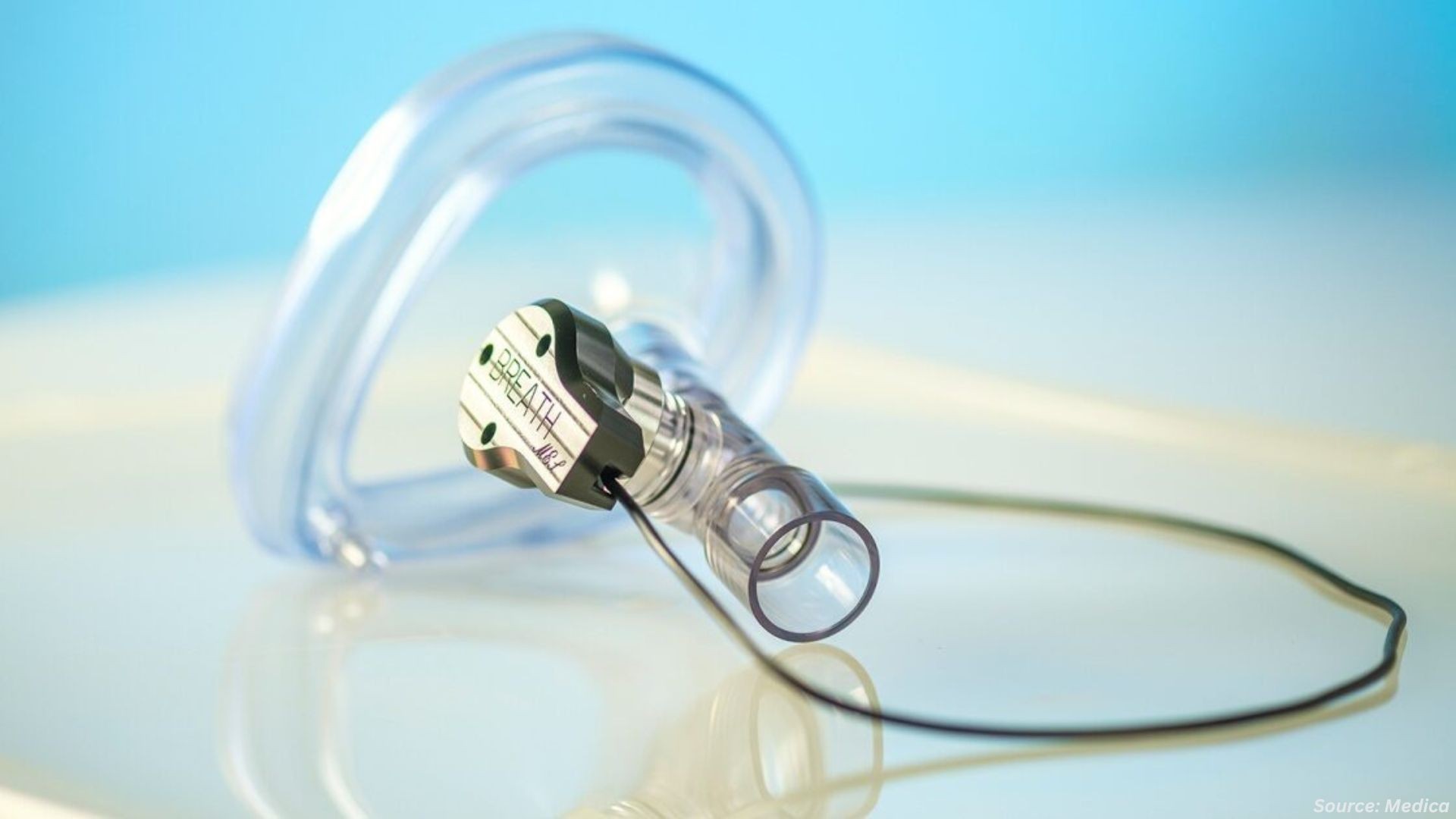
Ureteroscope Market by Product Type (Flexible, Semi-Rigid, and Rigid), by Usage (Reusable High and Moderate Durability, Disposable Cost-Optimized and Premium), by Procedure (Therapeutic and Diagnostic), by Patient Demographics (Adult and Pediatric), by Application (Urolithiasis, Urothelial Carcinoma, Ureteral Strictures, Hematuria Evaluation, Renal Pelvis Disorders, Stent Management, Others) and by End User – Global Opportunity Analysis and Industry Forecast 2025-2030
Industry Overview
The global Ureteroscope Market size was valued at USD 1.54 billion in 2024 and is expected to reach USD 1.65 billion by the end of 2025. The industry is predicted to reach USD 2.19 billion by 2030 with a CAGR of 5.8% from 2025-2030.
The market is experiencing steady growth, driven by the rising prevalence of kidney stones, growing demand for minimally invasive procedures, and rapid technological advancements. Ureteroscopy is now widely regarded as the gold standard for kidney stone management, offering high stone-free rates, lower complication risks, and quicker recovery compared to traditional surgical methods.
However, relatively higher device costs and limited access in emerging regions present significant challenges to widespread adoption. The surge in outpatient surgical centers and the increasing adoption of flexible and single-use ureteroscopes further supports market expansion.
Rising Prevalence of Kidney Stones Drives the Market
The rise in urolithiasis cases is a significant driver behind the increasing adoption of ureteroscopes globally. Factors such as sedentary lifestyles, inadequate hydration, high-sodium diets, and rising obesity levels have contributed to the growing incidence of kidney stones worldwide.
Ureteroscopy has become the preferred technique for stone removal due to its minimally invasive nature and high clinical effectiveness. As highlighted by BMC Urology in a 2024 publication, ureteroscopy is now widely regarded as the gold standard for managing kidney stones.
The condition affects a substantial portion of the global population, with particularly high occurrence in regions such as India and the U.S. This escalating burden on healthcare systems has amplified the need for efficient diagnostic and therapeutic solutions, positioning ureteroscopes as an essential tool in modern urological care.
Growing Adoption of Minimally Invasive Procedures Propels the Market Demand
The growing preference for minimally invasive procedures is a key factor driving the ureteroscope market demand. Both patients and healthcare professionals increasingly opt for ureteroscopy over traditional interventions such as percutaneous nephrolithotripsy (PCNL) or open surgery, primarily due to its lower risk of complications, shorter recovery periods, and reduced postoperative discomfort.
Flexible ureteroscopes, which have emerged as the leading modality in recent years, offer enhanced manoeuvrability and precise access to the urinary tract, making them especially effective for the treatment of kidney stones and other urological disorders. The proliferation of outpatient care facilities, including ambulatory surgical centers, further accelerates this trend by providing efficient, cost-effective settings for routine urological procedures.
A notable example is Dornier MedTech’s AXIS II URS SLIM 7.5, approved by the U.S. FDA in 2025, which is designed to enhance performance and usability in outpatient environments. This continued shift toward less invasive, patient-centric care is reinforcing the demand for advanced ureteroscopy technologies across the healthcare landscape.
Technological Advancements Fuel the Expansion of the Market
Rapid technological advancements are reshaping the market, significantly improving procedural efficiency, precision, and patient outcomes. Innovations such as high-definition digital imaging, enhanced flexibility, and the development of single-use ureteroscopes are transforming urological practice.
In October 2023, Laborie Medical Technologies acquired Urotronic, an Optilume drug-coated balloon technology company, specialized in treating urethral strictures and benign prostatic hyperplasia (BPH). This acquisition expands Laborie's urology portfolio and introduces a minimally invasive treatment option that combines mechanical dilation with localized drug delivery. In parallel, the integration of robotic-assisted ureteroscopy and medical laser technologies for stone fragmentation continues to raise procedural success rates and reduce the need for repeat interventions.
Compared to conventional methods such as extracorporeal shock wave lithotripsy, flexible ureteroscopy has demonstrated higher stone-free rates, underscoring its clinical advantage. These technological strides are instrumental in elevating standards of care and are driving sustained growth and innovation within the ureterorenoscope industry.
High Costs Restrain the Ureteroscope Market Expansion
One of the primary challenges in the industry is the high cost of advanced devices, which limit adoption, particularly in emerging economies. Digital and reusable ureteroscopes, such as those from Olympus and Karl Storz, come with high price tags, making them less accessible in underdeveloped and developing regions with constrained healthcare budgets.
Additionally, the expense of maintenance and sterilization for reusable models adds to the financial burden. While single-use ureteroscopes like Boston Scientific’s LithoVue reduce sterilization costs, their per-procedure expense remains a concern for cost-sensitive healthcare systems.
Rising Adoption in Outpatient Surgical Centres Creates Growth Opportunities
The continued expansion of outpatient surgical centers presents a strong future opportunity for the market. As healthcare systems prioritize cost efficiency and patient convenience, ambulatory surgical centers (ASCs) are becoming central to delivering minimally invasive urological procedures. This trend supports the growing demand for single-use ureteroscopes tailored to ASC environments.
Manufacturers are already aligning with this shift, as seen with Cook Medical’s 2023 launch of the Ascend ureterorenoscope in the U.S. and Canada, designed for improved manoeuvrability in outpatient settings. In 2024, Olympus received FDA approval for its single-use flexible ureteroscope RenaFlex, offering high-resolution imaging and infection control.
Similarly, Dornier MedTech secured FDA approval for its smallest scope, AXIS II URS SLIM 7.5, in 2025, emphasizing compact design and visualization quality. These developments position the outpatient segment as a key growth area, with product innovation and ASC-focused solutions opening sustained market potential.
Market Segmentation and Scope of the Study
The ureteroscope market report is segmented based on product type, usage, procedure, patient demographics, application, distribution channel, end user, and region. Based on product type, the market is divided into flexible ureteroscopes, semi-rigid ureteroscopes, and rigid ureteroscopes. Based on usage, the market is categorized into reusable and disposable/single-use. Based on procedure, the market is segmented into therapeutic and diagnostic. Based on patient demographics, the market is categorized into adult and pediatric. Based on application, the market is segmented into urolithiasis, urothelial carcinoma, ureteral strictures, hematuria evaluation, foreign body retrieval, congenital abnormalities, renal pelvis disorders, and stent management. Based on end user, the market is segmented into hospitals, urology clinics, ambulatory surgical centers, imaging and diagnostic centers, research laboratories, and teaching institutions. Regional breakdown and analysis of each of the aforesaid segments includes regions comprising of North America, Europe, Asia-Pacific, and RoW.
Geographical Analysis
North America leads in the global ureteroscope market share, primarily due to its advanced healthcare infrastructure and high incidence of kidney stone disease. The U.S. plays a central role in regional growth, with a considerable portion of the population affected by urolithiasis, driving strong demand for advanced ureteroscopy procedures.
Additionally, the growing number of outpatient surgical centers continues to support market expansion, reinforcing North America’s dominant position. Ongoing technological advancements and high healthcare expenditure underpin the region’s sustained growth.
Europe holds a substantial share of the industry, supported by its emphasis on minimally invasive urological interventions and favorable regulatory conditions. Leading countries such as Germany, France, and the U.K. benefit from robust healthcare systems and increasing adoption of single-use and flexible ureteroscopes. The region has seen steady innovation in digital imaging and disposable devices, enhancing procedural accuracy and infection control.
While Western Europe remains the primary contributor, cost-related challenges in parts of Eastern Europe pose limitations, making affordability and accessibility crucial strategic considerations for market players. Nevertheless, the region’s growing kidney stone burden and government-supported healthcare initiatives continue to drive demand across the region.
The Asia-Pacific region represents the fastest-growing segment of the industry. The increasing prevalence of kidney stones in countries like India and China, combined with rapid urbanization, shifting dietary habits, and expanding healthcare investments, is fueling market the ureteroscope market growth.
Local manufacturers are introducing competitively priced ureteroscopes, while global players are actively expanding their footprint through the introduction of advanced, single-use devices tailored to regional needs. While regulatory complexity and cost sensitivity remain challenges, the region’s improving healthcare infrastructure and rising awareness of minimally invasive techniques offer significant long-term potential for industry expansion.
The rest of the world, including Latin America, the Middle East, and Africa, represents an emerging market with gradual but promising growth. Increasing access to healthcare and a growing burden of urological conditions, particularly in the Middle East, are key drivers of demand.
The adoption of reusable ureteroscopes is more common in these regions, although interest in single-use models is growing in higher-income nations. Market expansion in these areas is somewhat limited by constrained healthcare budgets and infrastructure gaps, particularly in parts of Africa and Latin America. However, strategic partnerships, capacity-building efforts, and the introduction of cost-effective solutions could unlock significant opportunities in these underserved markets.
Strategic Innovations Adopted by Key Players
Key players in the global ureteroscope industry, including Boston Scientific, Olympus, Stryker, and Dornier MedTech, are driving growth through innovative strategies, recent technological advancements, and proactive responses to emerging opportunities. A central focus is on robust investment in research and development to introduce advanced, patient-focused ureteroscopy solutions.
In 2024, Stryker expanded its capabilities focused on minimally invasive surgery for tumours and intracerebral haemorrhages, linked with urology through the acquisition of NICO Corporation, reinforcing its competitive position. Despite ongoing advancements, the ureterorenoscope industry faces key challenges, including high device costs, especially for digital models, and a global shortage of trained urologists, which limits adoption in cost-sensitive and underserved regions.
However, rising demand for minimally invasive procedures and the expansion of outpatient surgical centers present strong growth opportunities. For instance, Boston Scientific introduced the LithoVue Elite in 2023 with FDA clearance, featuring intrarenal pressure monitoring for safety enhancements. Leading manufacturers are focusing on balancing technological innovation with affordability to drive growth across diverse markets.
Key Benefits
-
The report provides quantitative analysis and estimations of the industry from 2025 to 2030, which assists in identifying the prevailing ureteroscope market opportunities.
-
The study comprises a deep-dive analysis of the current and future ureteroscope market trends to depict prevalent investment pockets in the sector.
-
Information related to key drivers, restraints, and opportunities and their impact on the industry is provided in the report.
-
Competitive analysis of the key players, along with their market share is provided in the report.
-
SWOT analysis and Porters Five Forces model is elaborated in the study.
-
Value chain analysis in the market study provides a clear picture of roles of stakeholders.
Ureteroscope Market Key Segments
By Product Type
-
Flexible Ureteroscopes
-
Digital Flexible
-
Fiberoptic Flexible
-
-
Semi-Rigid Ureteroscopes
-
Integrated Working Channel
-
Non-Integrated
-
-
Rigid Ureteroscopes
-
High-Resolution Lens
-
Standard Resolution
-
By Usage
-
Reusable
-
High-Durability (>100 uses)
-
Moderate-Durability (30–100 uses)
-
-
Disposable/Single-Use
-
Cost-Optimized
-
Premium Disposable
-
By Procedure
-
Therapeutic
-
Laser Lithotripsy
-
Ureteral Balloon Dilation
-
Tumor Ablation
-
Foreign Body Removal
-
-
Diagnostic
-
Targeted Biopsy
-
Visual Mapping
-
Photodynamic Diagnosis (PDD)
-
By Patient Demographics
-
Adult
-
Elderly (>65 Years)
-
Middle-aged (40–65 Years)
-
-
Pediatric
-
Infants (<1 year)
-
Children (1–12 years)
-
Adolescents (13–18 years)
-
By Application
-
Urolithiasis
-
Urothelial Carcinoma
-
Ureteral Strictures
-
Hematuria Evaluation
-
Renal Pelvis Disorders
-
Stent Management
-
Others
By End User
-
Hospitals
-
Urology Clinics
-
Ambulatory Surgical Centers
-
Imaging & Diagnostic Centers
-
Research Laboratories
-
Teaching Institutions
By Region
-
North America
-
The U.S.
-
Canada
-
Mexico
-
-
Europe
-
The U.K.
-
Germany
-
France
-
Italy
-
Spain
-
Denmark
-
Netherlands
-
Finland
-
Sweden
-
Norway
-
Russia
-
Rest of Europe
-
-
Asia-Pacific
-
China
-
Japan
-
India
-
South Korea
-
Australia
-
Indonesia
-
Singapore
-
Taiwan
-
Thailand
-
Rest of Asia-Pacific
-
-
RoW
-
Latin America
-
Middle East
-
Africa
-
Key Players
-
Olympus Corporation
-
Boston Scientific Corporation
-
Stryker Corporation
-
KARL STORZ SE & Co. KG
-
Richard Wolf GmbH
-
PENTAX Medical (HOYA Corporation)
-
Cook Medical LLC
-
Macrolux.
-
Elmed Electronics & Medical Industry & Trade Inc.
-
AED.MD Inc.
-
OPCOM Inc.
-
SCHÖLLY FIBEROPTIC GMBH
-
Prosurg, Inc.
-
EMS ELECTRO MEDICAL SYSTEMS SA
-
Advin Health Care
REPORT SCOPE AND SEGMENTATION:
|
Parameters |
Details |
|
Market Size in 2025 |
USD 1.65 Billion |
|
Revenue Forecast in 2030 |
USD 2.19 Billion |
|
Growth Rate |
CAGR of 5.8% from 2025 to 2030 |
|
Analysis Period |
2024–2030 |
|
Base Year Considered |
2024 |
|
Forecast Period |
2025–2030 |
|
Market Size Estimation |
Billion (USD) |
|
Growth Factors |
|
|
Countries Covered |
28 |
|
Companies Profiled |
15 |
|
Market Share |
Available for 10 companies |
|
Customization Scope |
Free customization (equivalent to up to 80 working hours of analysts) after purchase. Addition or alteration to country, regional, and segment scope. |
|
Pricing and Purchase Options |
Avail customized purchase options to meet your exact research needs. |

















 Speak to Our Analyst
Speak to Our Analyst

























